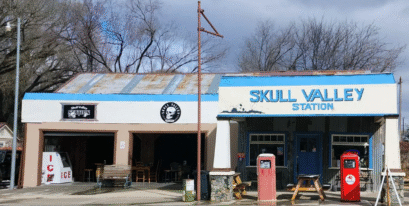Skull Valley is an old settlement, with the first European settlers coming here in 1864. Joseph Ehle and son John were among the first Europeans to settle in this valley. The second Walker Party was one of the first expeditions of European heritage adventurers and gold seekers to come to the Prescott and Skull Valley area.
The following table lists those early pioneers that successfully proved up on Skull Valley Homesteads as authorized in the Homestead Act of 1862.


Many of these pioneers are buried in the Pioneer cemetery on the Dickson Homestead in Skull Valley. The Walter L. Roberts family was among the early settlers, and their original ranch has stayed in the family for more than 100 years.
A community in rural areas of the West evolved dependent upon basic resource availability and the needs & events of the region. In the early formation of the community of Skull Valley several key events stimulated the settlement in this area:
The Human factors:
- Gold was discovered on Lynx creek by the Walker Party in 1863.
2. Arizona’s Territorial Capitol established in Prescott.
3. Military protection against the Indian raids improved, and was no longer an issue after the mid 1870’s.
4. Skull Valley was located along the main transportation wagon trail from La Paz to Prescott, one day’s travel SW of Prescott.
5. The Peavine Railroad was built through Skull Valley in May 1894, interconnecting the two mainline transcontinental (East to West) Railroad systems.
